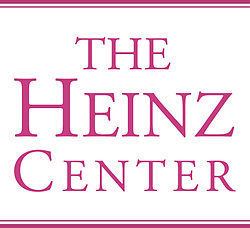Founded 1995 | ||
 | ||
Focus Biodiversity Protection, Managing Phosphorus in Agricultural Soils to Improve Chesapeake Bay Water Quality, Supporting the Development of National Indicators and Monitoring Systems, Wildlife Conservation Program, and Climate Change Information for Local Decision-Making Location Washington D.C., United States Key people Mark Gorenberg, Chair of the Board of Trustees; Teresa Heinz, Vice Chair of Board of Trustees; and Dr. Thomas Lovejoy, Biodiversity Chair Mission To advance sound environmental policy based on rigorous science and economics to ensure a healthy, thriving world for future generations Website www.heinzcenter.org/Home.html Headquarters Washington, D.C., United States Similar Society for Conservation Biology, American Institute of Biological, Island Press, Environmental Defense Fund | ||
The H. John Heinz III Center for Science, Economics and the Environment, is a nonpartisan nonprofit organization headquartered in Washington D.C. The Center seeks to bring together representatives of business, government, the scientific community and the environment community to collaborate on the development of environmental policy and science-based solutions to environmental challenges to society. The Heinz Center is best known as the creator of the State of the Nation's Ecosystems reports, which have become seminal references for U.S. policy makers and environmental managers on the conditions of and trends in U.S. ecosystems and habitats and the goods and services they provide. The Center was founded in 1995, in tribute to U.S. Senator H. John Heinz III of Pennsylvania after his untimely death in 1991.
Contents
Origin
The Heinz Center was conceived of by the wife of the late Senator H. John Heinz III, Teresa Heinz, who had a vision for a Center where experts from business, science, government and non-governmental organizations could come together to solve seemingly intractable environmental challenges. Following Senator Heinz' death in 1991, The Vera I. Heinz Endowment and several others made a $20 million gift, one of the largest grants ever made to the environment, to create the John Heinz Center, in memory of Senator Heinz. The Center was founded in 1995 in Washington D.C.
The State of The Nation's Ecosystems
The State of The Nation's Ecosystems was designed to provide an impartial and comprehensive understanding of the state of and trends in ecosystems, much the way decision makers use gross domestic product (GDP) to gauge national economic health. As part of the project, The Heinz Center published two State of the Nation's Ecosystems reports, one in 2002 and one in 2008, and a report on environmental data gaps and policy roadmap for environmental information. Since their publication, the State of the Nation's Ecosystems reports have become seminal references for national and regional policymakers and resource managers on the condition and use of ecosystems in the United States. The reports were created with the input of more than 300 scientific experts, who agreed upon a set of 108 indicators to track trends in the health of distinct U.S. ecosystems—coasts and oceans, farmlands, forests, freshwaters, grasslands and shrublands, and urban and suburban land-use types—on the national, regional, and local levels.
